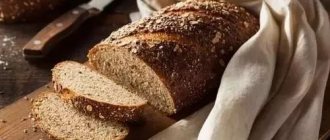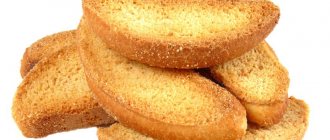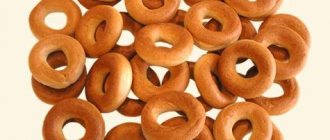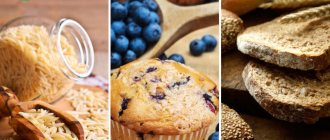Sushi, bagels and bagels are a delicacy known to each of us since childhood. At that wonderful age, we consumed them without restrictions, without being bothered by the questions of whether dry foods make us fat, what they are baked from, and how many calories they contain.
Sushki, bagels and bagels have a lot in common: a ring shape, approximately the same cooking recipe and, as a result, similar taste. In this regard, in modern bakery enterprises they are all referred to as bagel products. In everyday life, these words are used quite freely: a bagel can be called both a small dry bread and a round bun with filling. However, in the literary language the concepts of “bagel”, “bagel”, “drying” are clearly distinguished, including by “nationality”.
Drying is a native Russian word. It was first recorded in V. Dahl's explanatory dictionary in 1856 as a dialect of the peoples of the Voronezh province. The baked goods were small, heavily dried rings. The words “bagel” and “bublik” came from the Ukrainian language from the verb “bublyatsya”, that is, “to inflate”, “to bubble”.
Differences between dryers and bagels and bagels
Despite the similarity in baking technology and taste, there are still differences. This primarily concerns the cooking recipe. The main ingredients for the dough of all types of lamb products are flour, yeast and sugar, a common technological point is the obligatory stage of scalding the dough. This is where the recipe similarities end.
Drying
Dryers are the smallest rings in their product category with a thickness of 0.3-0.9 cm. A kilogram of dryers is approximately 250 pieces.
The product is prepared from a very hard kneaded low-acid dough using premium flour. In addition to flour and yeast, sugar, butter or margarine is added to the dough. There are varieties of dryings with the addition of condensed milk, poppy seeds, vanilla, etc. Important distinguishing features are the high sugar content - at least 20% and low water content - no more than 12%. It is the latter circumstance that makes drying a long-term storage product.
An important step in preparing the product is scalding in boiling water. The dough prepared according to the above recipe promotes strong moisture absorption. Therefore, when placed in boiling water, the dryers swell. A product is considered to be of high quality if, during scalding, its volume has increased by at least 3 times, and when finished, the dried product easily falls apart when pressed into 4 relatively identical parts.
Baranki
Bagels have a larger size, weight and ring diameter. 1 kg holds from 25 to 50 pieces. When kneading dough for simple bagels, very little sugar is used - no more than 1% of the total mass. If the bagels are butter, then – 8%, if they are sugar – then 15%. The classic recipe involves boiling in boiling water or milk, during which the products should also swell. How much depends on the type of dough, which can be lean or rich, egg, fruit, etc. Bagels are always flavored with a variety of natural aromatic additives:
- saffron;
- poppy;
- lemon;
- caraway;
- sesame, etc.
Bagels
These are the largest lamb products with a large ring diameter and high humidity - up to 25% (that is, they are very soft and rich). No more than 20 rings fit in 1 kg.
To prepare the dough (which is not kneaded stiffly), wheat flour, eggs, salt, sugar and various flavorings are used. The rings are immersed in boiling water for 4-5 minutes, after which, coated with a milk-yolk mixture, they are sent to the oven. There are many types of products:
- butter;
- air;
- sugar;
- oil;
- custard;
- with filling (cinnamon, nuts, minced meat, etc.).
Sushi, pretzels and bagels: how dangerous are they for your figure?
I am often asked the same question: our native sushi, bagels, bagels - these are better than any cookies, and even more so cakes! Subconsciously, it seems that these baked goods are not so harmful - they do not contain much fat or sugar. But I would still like to figure it out properly - is it really worth eating?
In tsarist times, there were more than 40 types of bagels and they were prepared relatively easily - flour (originally rye, now wheat), sugar, salt, a little vegetable oil, sourdough or yeast. It was usually men who kneaded the stiff dough—they were called rubers. Having simply rolled the dough into flagella, they were boiled in hot water. Hence, by the way, the name “steering wheels” - it used to sound like “baranki”. This is done to stop the growth of yeast, maintain shape and give the finished baked goods a crispy, glossy crust. They could boil not only in water, but also in meat or fish broth (this was a peasant version), and sometimes expensive essential oils were added to merchant versions.
In modern production the technology is very similar. Except that the range is much smaller. And so everything is the same: kneading, proofing, molding. The scalding process has been improved - drying, for example, is done with steam in a special apparatus and then baked. As they say at the Moscow Research Institute of the Baking Industry, the production of lamb products is very conservative, technologies have not changed for decades. So even among cheap varieties it is difficult to find bad drying or bagel.
We thank our friends and partners for their help in creating the story:
Museum of Russian Dessert in Zvenigorod and personally the guide Anastasia Konstantinov for an interesting story and the opportunity to prepare bagels according to an old recipe (Instagram, VKontakte, Facebook)
“Trading house “Embassy of Tasty Food” - production of natural and tasty baked goods, as well as cookies and snacks! (Instagram, VKontakte)
Research Institute of Bakery Industry (Instagram, VKontakte)
Bretzel Museum
Historian of Russian cuisine Pavel Syutkina
A permanent expert of our program, nutritionist Anna Chaikina
Network of children's dentistry Dental Fantasy and personally Ekaterina Mikhalkova. Dental Fantasy is the best pediatric dentistry in Russia!
Ekaterina Burlyaeva – Head of the CDC “Health and Sports Nutrition”, Federal Research Center for Nutrition and Biotechnology
Federal Service for Supervision of Consumer Rights Protection and personally Nadezhda Ruslanovna Raeva
Supermarket chain “Azbuka Vkusa”
Ekaterina Pikulina, mother of many children and blogger, who shared the original recipe with us. You can find it, as always, in the corresponding section of our website
Calorie content and composition
Dried foods are classified as high-calorie foods. Per 100 g of product there are:
- 372 kcal;
- 11.3 g protein;
- 4.4 g fat;
- 70.5 g carbohydrates.
In addition to the above components, drying contains a rich list of useful vitamins and microelements, including rare ones, namely;
- vitamins of group B (B1, B2, B5, B6, B9) and E;
- calcium;
- phosphorus;
- zinc;
- copper;
- manganese;
- magnesium;
- copper.
What is drying
Almost all drying products are made in production with the addition of margarine . In rare cases, palm or any other vegetable oil is used instead, as well as sugar, salt, yeast, flour and sometimes vanillin. In some types of dryers you can find components such as lactic acid bacteria. Each of the listed ingredients affects the calorie content of the product.
On average, the calorie content of standard dryers is 330 kcal per 100 g . This is a non-dietary product, so people who are prone to obesity or adhere to a healthy diet should refrain from this kind of baking.
There are several varieties of such products. They come in fresh and salty, sweet, caramel, sprinkle and snack varieties. The most popular among people are sweet sushi, which can often be found on store shelves in our country.
Benefits and harms
Like any other product, drying agents have beneficial and harmful properties. The amount of the above microelements in the composition makes them certainly useful. Suffice it to say that consuming 50 g of dried fruit per day provides the body with the daily norm of manganese, and 100 g – with the daily norm of copper. B vitamins are good for the nervous system, skin and hair, E is a strong antioxidant.
Being a product of long-term storage, drying bags are extremely useful and practical in preparation for travel, hikes, months-long expeditions, shifts, etc.
When talking about harm, first of all we should indicate the measure. Eating dry foods alone should not expect a positive effect on health and body shape. In addition, if you have gastrointestinal diseases or diabetes, this product is strictly contraindicated.
The “unhealthy” category includes drying products containing group E preservatives, since we are no longer talking about naturalness. Information about the composition can always be found on the packaging.
Should you use it when losing weight?
Dryers are flour products, they are high in calories and contain a lot of carbohydrates. However, nutritionists recommend including them in the diet (in small quantities) on an ongoing basis, including those who are on a diet for weight loss. There are several reasons for this:
- Diet is always stressful for the body. One drying meal is only 17 kcal, so 3-4 pieces a day will not do any harm, and the benefits are undoubted: drying with hot tea is delicious, it lifts your spirits and makes the diet much more comfortable, which is extremely important for overcoming stress.
- The product contains useful substances that facilitate the digestion of food and does not reduce metabolic activity.
- During a diet, drying can become a source of replenishment of many microelements, the level of which always decreases during weight loss measures and can cause health problems.
What diet is drying suitable for?
Is it possible to eat dry food on a diet? It all depends on the goals and objectives of the dietary regime. Drying cakes are suitable for the diet of those girls who limit the number of calories consumed per day, as they can replace higher-calorie desserts. When this product enters the stomach under the influence of water, it increases in size at least 2 times, fills the space, and the feeling of fullness comes faster. As an intermediate stage between non-diet eating and the desire to give up sweets, drying is ideal. Eating salty dry foods is not recommended, since salt retains water in the body during a diet. You should choose those in which the balance of salt and sugar is normal. If you like popcorn, then choose only the unsalted and unsweetened variety.
What can you combine with drying on a low-carb diet?
Reducing the amount of carbohydrates does not mean giving them up completely - it is unsafe and can cause metabolic disorders.
For breakfast you can eat 5-6 sushi with a fermented milk drink. Low-fat dairy products are good.
Yogurt for weight loss is widely used in various diets as it provides the protein and fat requirements. However, choosing the right product for weight loss is not a trivial task. Yoghurts should contain only milk and starter culture. There should be no flavorings, sugar or fruit fillers in a healthy product. Many girls tried to lose weight on yoghurts; they ate them for breakfast, lunch and dinner, but as a result they only gained weight and spoiled their stomach. What is the reason?
You can lose weight on yoghurt only if there are no additives in it, including pieces of fruit. The fact is that all the fillings for fruit yoghurts are generously flavored with sugar; without them, pieces of berries will give a sour taste. As a rule, advertised yoghurts contain jam rather than fruit, which increases the calorie content by 3 times.
What can be replaced?
Slices of bread dried in the microwave (preferably black or bran) are an excellent substitute for drying: they are lower in calories, and during the drying process the number of calories will decrease even more.
It will also be useful to read the article “Are breads healthy: all the pros and cons.”
You can use store-bought crackers with raisins or poppy seeds. They promote digestion, repel the feeling of hunger, which makes it easier to endure the diet.
You can get more information about what can replace drying, about the benefits and harms of bread and crackers during a diet from the articles: “Bread: benefits and harm” and “Whole grain bread - is it healthy or harmful?”
Why is margarine harmful?
At first glance, margarine is made from natural vegetable oils that contain healthy fatty acids. However, to turn liquid vegetable oils into a solid state, the method of hydrogenation is used. Under the influence of high temperature and saturation of oils with hydrogen molecules, the structure of fatty acids changes at the molecular level. Thus, fatty acids are converted into trans fats - poison for our body in the literal sense of the word, which affects the human body at the cellular level.
During the hydrogenation process, the resulting mass is very unattractive in appearance and taste, so future margarine is modified by adding bleaches, flavors, preservatives, emulsifiers and synthetic dyes.
By the way, initially, at the first stage of margarine production, the cheapest raw materials are also used as vegetable oils: corn, soybean, those obtained from genetically modified raw materials and harmful palm oil.
Expert opinions
And in conclusion, we will present the opinion of some nutritionists on the question of whether cutting fat makes you fat.
Thus, Maria Koroleva, a supporter of separate nutrition, believes that if drying is used in a separate dose, this will not affect the process of losing weight. Alexey Kovalkov, the author of several books on dietary nutrition, allows the use of dry foods during the diet, with the exception of fasting days. Vladimir Mirkin, the author of his own diet, claims that a few crackers or crackers a day for those losing weight or maintaining the desired weight are not only not harmful, but useful and necessary.
How are they different from bagels?
Let's figure out the difference between dryers and other similar-shaped flour products: bagels and bagels.
Differences:
- They have a smaller size.
- They are harder.
- In their production, not sour, but very hard dough is used.
- They add more sugar.
- They swell in water 2-3 times; this does not happen with bagels or bagels.
- They are light, which allows you to eat several pieces without harming your figure.
Bagels are made from yeast dough, they can be very large, lightly toasted. Bagels also differ in size and consistency. Dryers are small rings that crunch and break when pressed.
Be sure to see: Is it possible to eat corn while on a diet: benefits and harms? Get a complete set of proteins, fats and carbohydrates from Doshirak dietary products on a diet: is it possible to eat fast food products? Is it possible to eat soy sauce while on a diet: all the myths and truth










